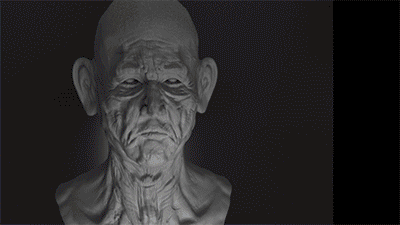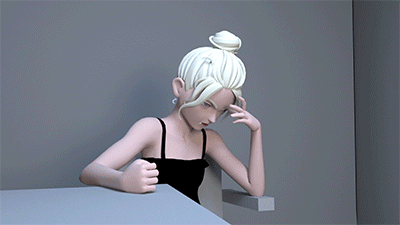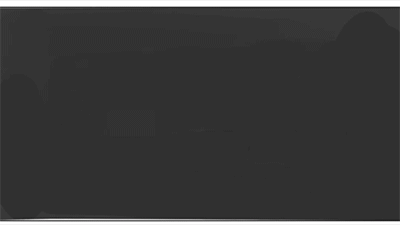Click to see detailed information about the class and student work. Please note that our course offerings depend on enrollment and instructor availability.
What Are Prerequisites and Advisories?
Prerequisite = A course that you must complete before you are allowed to enroll in another (usually higher-level) course.
Advisory = A course that is strongly recommended for you to complete, before you enroll in another course.
FTV 66A Basic Techniques for Animation: Stop-Motion
- 3 units
- Usually offered in Fall
This foundation course teaches animation principles through basic techniques of stop-motion animation, including puppet fabrication, armatures, lighting setups and suspension rigs. The course will cover principles of movement and timing, lighting and cinematography, as well as development of film concepts created specifically for stop-motion.
- Software used: Monkey Jam or Dragonframe
- Equipment used: Two stop-motion stations, armatures, and puppet fabrication tools and supplies (located inside Animation Lab AT 104B)
FTV 67A Principles of Animation: 2D Media
- 4 units
- Advisory: ART4A
- Usually offered in Fall and Spring
This foundation course covers the most important principles of 2D hand-drawn animation, using both traditional and digital mediums.

By the end of the course students will be able to design expressive movements and create sequences of drawn character and effects animation. Assignments are focused around practicing the principles and include classic exercises such as the bouncing ball, 2D animation effects, walk cycle, plus others.
- Software used: Adobe CC Animate and Toon Boom Harmony are used for in-class exercises. TV Paint and Dragonframe (pencil tester) are also available for use.
- Equipment used: Windows desktop computers, digital drawing tablets, pencils, paper, high speed scanner, and two pencil testing stations (located inside Animation Lab AT 104A)
FTV 68A Sound for Animation
- 3 units
- Prerequisite: FTV 67A (formerly FTV 69A)
- Advisory: FTV 20
- Usually offered in Winter
Sound for Animation is an advanced animation production class covering techniques used to synchronize animation to sound, as applied to music, voice and sound effects tracks.
Students are given the opportunity to learn lip syncing, create sound effects, and create a full-body acting piece with dialog. By the end of the course, students will be able to create their own field and voice-over recordings, design and edit soundtracks for animated films, synchronize voice tracks to animated characters, and edit music cues to animated sequences.
- Software used: Adobe Audition and Adobe Premiere are used for in-class exercises.
- Equipment used: Foley/ADR Room, field recorders and Windows desktop computer. Other equipment used will depend on the student's chosen animation medium.
FTV 70A Storyboard and Visual Development for Animation
- 3 units
- Advisory: FTV 67A (Formerly FTV 69A)
- Usually offered in Winter
This class focuses on the development of ideas for animated films and the creation of their visual design using storyboard technique. Assignments are centered around translating film concepts into visual images, selecting drawn camera angles and choosing a film editing style while in pre-production. Students may work together in groups and have the opportunity to work on developing ideas for a short personal film.
- Software used: None required. Students may use any program of their choice.
- Equipment used: Traditional media
FTV 71G Introduction to 3D Computer Animation - Modeling
- 4 units
- Offered year-round
This is the first course in the 3D animation sequence. In this course, students learn the basics of 3D computer modeling in Autodesk Maya through demonstrations and hands-on activities.

This course explores basic modeling techniques, surface mapping, lighting, rendering and character rigging. Upon completing the course, students will be able to create 3D models of hard-surface objects, characters and environments, and apply textures and lighting to create a polished cinematic still image.
- Software used: Autodesk Maya
- Equipment used: Windows desktop computer, digital drawing tablets
FTV 71H Introduction to 3D Computer Animation - Character Motion
- 4 units
- Offered year-round
This is the first course in the 3D animation sequence. In this course, students learn the basics of 3D computer modeling in Autodesk Maya through demonstrations and hands-on activities. This course explores basic modeling techniques, surface mapping, lighting, rendering and character rigging.

Upon completing the course, students will be able to create 3D models of hard-surface objects, characters and environments, and apply textures and lighting to create a polished cinematic still image.
- Software used: Autodesk Maya
- Equipment used: Windows desktop computer, digital drawing tablets
FTV 72GHJ Animation Workshop Series
- 4 units
- Advisory: FTV 20, FTV 68A, FTV 70A, at least one of the following: FTV 66A, FTV 67A, FTV 71H (depends on type of animation to be created)
- Prerequisites: previous course in sequence
- Offered year-round

These three capstone courses give students the chance to apply knowledge gained from previous animation production classes (F/TV 66A - 71H) to create their own animated project. The three courses may be taken over the span of one academic year or over several years, depending on the student’s interests and progress.
Upon completion of the course sequence, students will have work that can be used in their demo reels and professional portfolios. Each course focuses on a stage of production:
- Pre-Production (72G) focuses on the creation of storyboards, set designs, character models, temp soundtracks and animatics
- Production (72H) focuses on producing the animation for the project
- Post-production (72J) focuses on finishing the animation, editing and compositing picture tracks, sound effects and musical score.
Students who choose to create animated films are encouraged to submit them to film festivals.
- Software available: Autodesk Suite, Adobe Creative Cloud Suite, TV Paint, Toon Boom Harmony, Dragonframe, Audition, Audacity, Sonicfire Pro, MonkeyJam
- Equipment available: Digital drawing tablets, Foley recording room, Animation Lab with animation drawing desks, pencil-testing stations and stop-motion equipment
FTV 75G History of Animation (1900-Present)
- 4 units
- Advisory: EWRT 1A or EWRT 1AH or ESL 5
- Usually offered in Fall and Spring
- This is a general elective (GE) course
This is an international survey of the historical development of the animated film, from its origins to a contemporary art form, with emphasis on the contributions of studios and individual artists from around the world. The course investigates the aesthetic, technological, economic and social factors that contributed to the form, while examining the value systems reflected in and shaped by works from diverse cultures.
- Software used: N/A
- Equipment used: The course is taught in the FTV department's state-of-the-art theater, AT 120, with full surround sound and the capability to play films from around the world.

